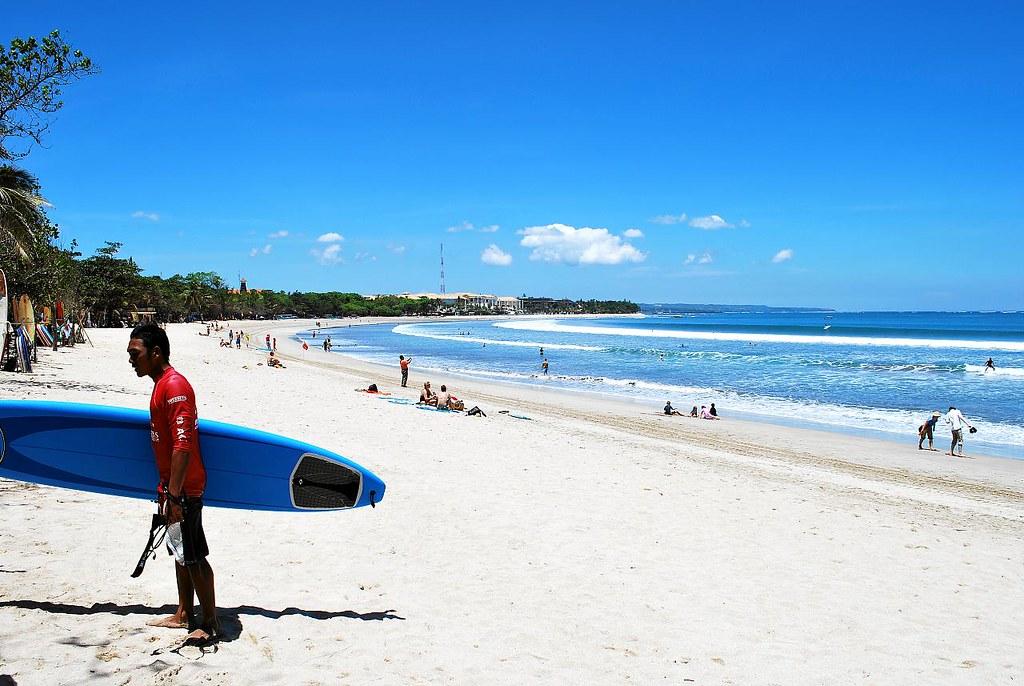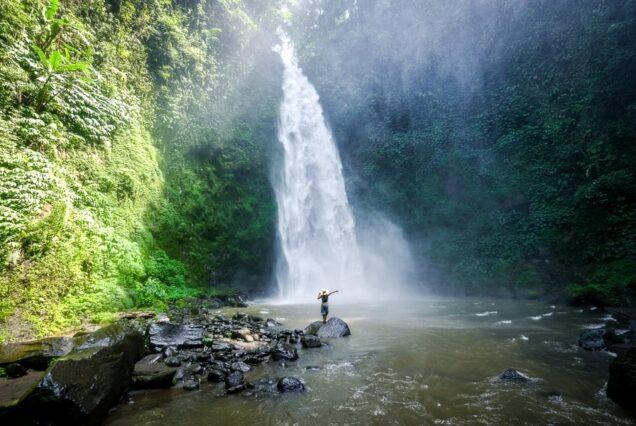Have you ever dreamt of lounging on Bali’s pristine beaches, exploring vibrant markets, or immersing yourself in its rich culture? Picture this: the sun setting over lush rice terraces, casting a golden glow on ancient temples. Now, imagine planning this dream getaway, only to be met with unexpected rain or crowded attractions. So What is the Best (or Worst) Time to Travel to Bali?
In this article, we’ll delve into the enchanting island of Bali, where the concept of seasons goes beyond just weather. Navigating the ebb and flow of Bali’s climate can significantly enhance your travel experience, ensuring that you make the most of your time in this tropical paradise.
Bali’s Seasons
Dry Season (April-October)

Bali experiences its dry season from April to October, offering travelers a sun-drenched paradise. During this time:
- Ideal weather prevails, characterized by warm sunshine, minimal rainfall, and calm seas.
- Perfect for indulging in beach activities, diving into crystal-clear waters, riding the waves through surfing, embarking on scenic hikes, and exploring the island’s lush natural beauty.
- However, it comes with downsides, including peak season crowds, higher accommodation prices, and the potential for disruptions due to various festivals and events.
Wet Season (November-March)

As the calendar turns to November, Bali transitions into its wet season, lasting until March. Here’s what you can expect:
- Increased rainfall, particularly from December to February, can disrupt outdoor plans, making it less favorable for beach-centric activities.
- Despite the rain, the wet season has its advantages, such as fewer crowds, lower accommodation prices, and the transformation of landscapes into lush, vibrant scenes.
- This season also brings unique cultural events, providing an opportunity to immerse yourself in Bali’s rich traditions. Activities during the wet season often focus on cultural experiences, visits to picturesque rice terraces, awe-inspiring waterfalls, and exploring ancient temples.
Shoulder Seasons (March-April & October-November)
The transitional periods between the dry and wet seasons, occurring in March-April and October-November, offer a balanced compromise:
- Weather during these shoulder seasons features sunny days interspersed with occasional showers, providing a pleasant and flexible climate.
- Travelers can enjoy a balance of good weather, moderate crowds, and decent prices during these months.
- The shoulder seasons cater to those seeking a mix of outdoor adventures and cultural exploration, making them ideal for a diverse range of activities.
Understanding these distinct seasons is crucial for planning a Bali trip that aligns with your preferences and desired experiences. Whether you’re chasing the sun on pristine beaches, delving into cultural treasures, or navigating a budget-friendly itinerary, Bali’s seasons offer something for every traveler.
Best Time for Specific Travel Styles
Budget Travel
For those looking to maximize savings and minimize expenses, strategic timing is key. Consider planning your Bali adventure during the wet season (November-March) or the shoulder seasons (March-April & October-November). During these periods, lower demand leads to reduced accommodation prices, allowing budget-conscious travelers to explore Bali without breaking the bank.
Beach Bums
If your idea of paradise involves sun-soaked shores and gentle waves, the dry season from June to September is tailor-made for beach lovers. Specifically, September stands out as the optimal month, offering the calmest seas for a tranquil seaside retreat. This period ensures optimal beach conditions, making it ideal for sunbathing, water sports, and unwinding by the ocean.
Culture Enthusiasts
Immersing yourself in Bali’s rich cultural tapestry is best enjoyed during the wet season (November-March) or the shoulder seasons (March-April & October-November). With fewer crowds, you’ll have the opportunity to explore the island’s temples, attend traditional ceremonies, and delve into cultural experiences without the hustle and bustle of peak tourist activity.
Surfers
Bali is a surfer’s paradise, and timing your visit is crucial to catch the best waves. The dry season, spanning from May to August, is the prime period for surfing enthusiasts. However, keep in mind that specific waves are optimal at different times, so research your preferred surf spots to align your visit with the best surfing conditions.
Families
Coordinating a family vacation requires careful consideration of school holidays and weather conditions. The dry season (April-October) aligns perfectly with school breaks, making it an excellent time for families to explore Bali together. During these months, you can enjoy family-friendly activities, cultural excursions, and outdoor adventures with the added benefit of favorable weather conditions.
Tailoring your Bali trip to your preferred travel style ensures a more fulfilling and enjoyable experience. Whether you’re chasing waves, exploring cultural gems, or planning a family getaway, understanding the best time for your chosen activities enhances the overall quality of your Bali adventure.
Additional Factors
Local Holidays & Festivals
Beyond Bali’s seasonal variations, it’s essential to factor in local holidays and festivals that can significantly impact your travel experience. Research major events and celebrations taking place during your intended visit. While festivals can provide unique cultural insights, they may also attract larger crowds and affect pricing for accommodations and activities. Being aware of these events allows you to plan your trip around them or actively incorporate them into your itinerary for a more immersive experience.
Personal Preferences
Your individual preferences play a crucial role in determining the best time to visit Bali. Consider the following factors to tailor your trip to suit your tastes:
- Heat Tolerance: Bali’s tropical climate means warm temperatures year-round. If you prefer milder weather, you might find the dry season more comfortable. However, those who enjoy the warmth may appreciate the wet season’s lush, green landscapes.
- Desired Activities: Identify the activities that top your Bali bucket list. Whether it’s lounging on the beach, exploring cultural sites, or engaging in outdoor adventures, aligning your visit with the most favorable conditions for your preferred activities ensures a more fulfilling experience.
- Social Scene: Bali’s atmosphere can vary based on the season. The dry season tends to attract more tourists and a livelier social scene, while the wet season offers a quieter, more intimate ambiance. Consider your preference for bustling crowds or a more serene setting when planning your trip.










